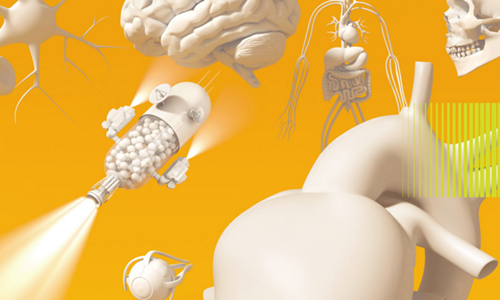Edible Battery To Power Internal Medical Devices
December 21, 2017
Source: popsci
 774
774

Imagine taking a pill with an ingestible sensor that takes measurements and sends information wirelessly to your doctor, or a pill that senses changes in your gut microbiome and adjusts its dose accordingly. Ingestible medical devices promise such applications, and many more, but a big challenge is making their power sources safe for our bodies.
"For decades, people have been envisioning that one day, we would have edible electronic devices to diagnose or treat disease," materials scientist Christopher Bettinger said in a statement. "But if you want to take a device every day, you have to think about toxicity issues. That's when we have to think about biologically derived materials that could replace some of these things you might find in a RadioShack."
Bettinger and his team at Carnegie Mellon University have taken a big step towards that goal. They've developed a battery out of melanin, a pigment that occurs naturally in our skin, hair, and eyes. Melanins protect our bodies from free radicals, but they also bind and unbind metallic ions, a chemical process crucial to the function of batteries.
The team built the batteries using melanin and other biocompatible materials such as manganese oxide, copper, and iron. They found that the melanin battery could power a 5 milliwatt device for up to 18 hours.
"The beauty is that by definition an ingestible, degradable device is in the body for no longer than 20 hours or so," Bettinger said. "Even if you have marginal performance, which we do, that's all you need."
Ingestible batteries aren't new, but previous batteries were not biodegradable and thus were intended to be excreted from the body. If used frequently, such batteries could cause harm.
The Carnegie Mellon team is now experimenting with making batteries from other biodegradable materials such as pectin. The next step involves developing a safe, digestible covering for the battery.
The team will present its work today in Philadelphia at the National Meeting & Exposition of the American Chemical Society.
By DduRead more on
- 【EXPERT Q&A】What are the regulations and requirements for exporting medical devices to the European Union? September 5, 2023
- 【EXPERT Q&A】What is the procedure for registering medical devices for the Russian market? August 22, 2023
- Things to Know before Buying Newborn Baby Incubators March 31, 2022
- Portable Nebulizer Machine September 10, 2018
- PHYSIOTHERAPY TABLE September 7, 2018
your submission has already been received.
OK
Subscribe
Please enter a valid Email address!
Submit
The most relevant industry news & insight will be sent to you every two weeks.



